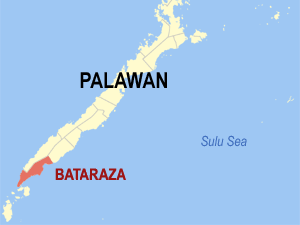PhilSA clarifies: Falling, burning object seen in Palawan towns likely a meteoroid
MANILA, Philippines — A glowing, falling object spotted by netizens in different Palawan towns is more likely to be a meteoroid rather than rocket debris, the Philippine Space Agency (PhilSA) said on Monday.
In a statement from PhilSA, the phenomenon captured by netizens in Bataraza and Rizal towns can be caused by meteoroids, or small space rocks usually just centimeters across, entering the earth’s atmosphere.
“Based on publicly available information, which includes CCTV footage, the phenomenon could have been caused by a meteoroid as it enters the atmosphere,” PhilSA said.
“Small meteoroids (usually a few centimeters across) completely disintegrate in the atmosphere. Larger meteoroids, on the other hand, will survive the atmosphere and eventually hit the ground and produce a loud booming sound. Recovered pieces of these meteoroids are called meteorites,” it added.
But aside from meteoroids, the agency said that the bright light over the sky can also be caused by fireworks and thunderstorms.
Earlier, reports came out about residents of the two Palawan towns being surprised to see debris covered in bright light moving almost horizontally before falling down and exploding.
Many assumed that it was part of the rocket debris — considering that last November 2022, PhilSA also alerted the residents of Palawan and Occidental Mindoro about the debris from China’s Long March 5B possibly landing over waters near the provinces.
READ: Debris near Mindoro ‘highly likely’ from Chinese rocket — PH Space Agency
However, PhilSA said that it is unlikely that the phenomenon is related to the Long March 7A and Long March 3B rockets because the rocket launch of the 7A happened on Monday, while the sighting in Palawan occurred last Saturday.
Meanwhile, the 3B rockets had already crashed back into earth, and had burned up during reentry.
“PhilSA would like to clarify that the phenomenon is highly unlikely to be related to the Long March 7A and the Long March 3B rockets. The Long March 7A rocket was launched on Monday, 09 January, while the sighting and supposed explosion happened on the evening of 07 January. Meanwhile, expected unburned debris from the Long March 3B rocket, launched on 29 December, has already fallen on the drop zone area near Palawan,” PhilSA said.
“Unburned debris such as the payload fairing and rocket boosters are designed to separate from the rocket and fall back to Earth minutes after a launch before the rocket enters outer space. The reported sighting and explosion are also unlikely to be related to any orbital debris re-entry,” it added.
PhilSA also said that no orbital debris were projected to enter through the Philippine airspace.
“Based on available predictions and tracks of space objects returning from space, no orbital debris re-entered the atmosphere near the Philippines around the reported time of the sighting and supposed explosion,” it noted.
RELATED STORY:
READ: Debris from Chinese satellite launch may fall off Palawan — PhilSA
